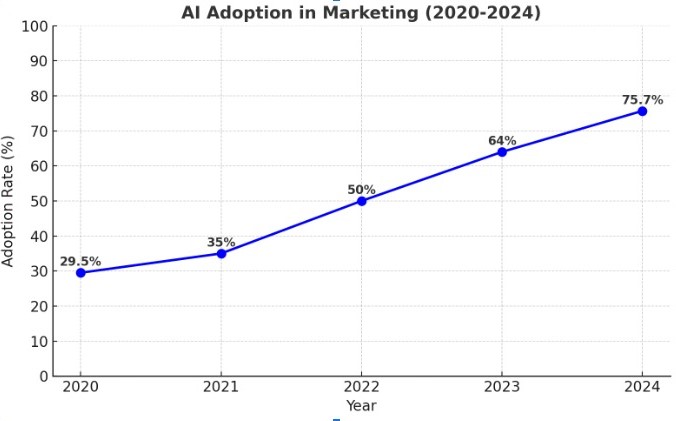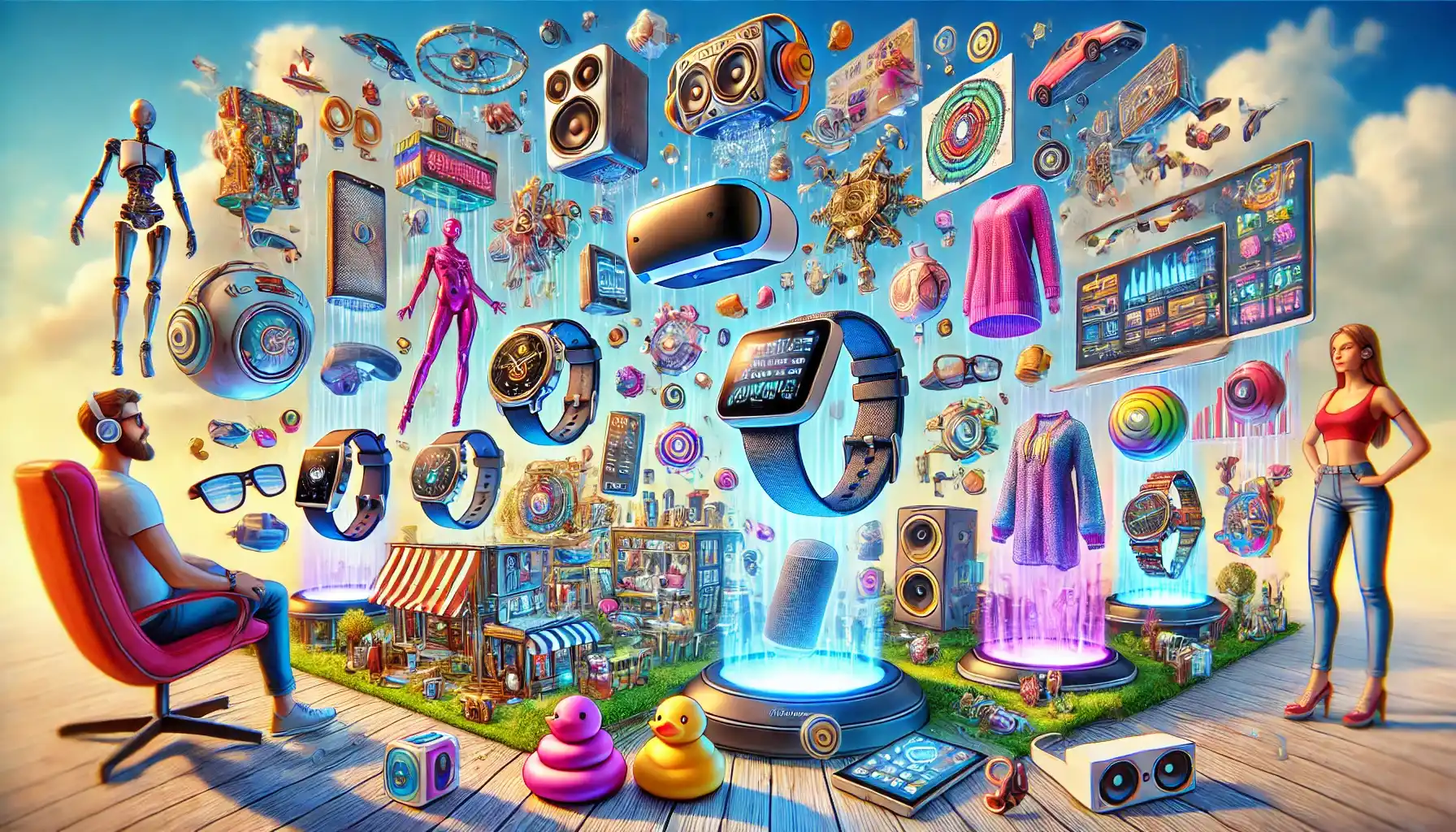Have you ever noted how advertisements appear to know precisely what you’re considering? That’s not luck—it’s the control of AI in Marketing.
Take this illustration: a little startup battling to stand out embraced machine learning for advertisements. They skyrocketed their reach quickly, much obliged to AI’s capacity to foresee client needs and convey hyper-personalized campaigns.
But AI isn’t fair in crunching information. It’s mixing inventiveness with cutting-edge tech to transform advanced publicizing. The conceivable outcomes are endless, from making passionate advertisements to focusing on clients in real time.
In this web journal, we’ll reveal how AI is reshaping marketing methodologies, investigate little-known developments, and examine what’s next for the future of marketing—prepared to jump in? Let’s investigate!

Why is Machine Learning a Game-Changer for Digital Ads?
Machine learning (ML) transforms digital marketing by surpassing traditional algorithms and methods. In the past, marketers had to physically set rules and change campaigns, frequently based on inadequate information. However, with machine learning for advertisements, calculations can learn from information, becoming more astute and proficient.
From Conventional to Prescient Models
Traditional advertising depends on settled rules, whereas predictive and real-time learning models are based on real-time information. These models analyze client behavior continuously and optimize campaigns on the fly, guaranteeing advertisements reach the right individuals at the right time without manual intervention.
The Control of Fortification Learning
One of the lesser-known viewpoints of machine learning in advertisements is support learning. This method permits calculations to optimize advertisement procedures over time, particularly in advertisement offerings. It learns the most successful approach, improving ROI by making more astute choices with each iteration.
Real-Life Case | Boosting ROI
A small e-commerce brand utilized prescient analytics to tailor its notice technique, which resulted in a 50% increase in ROI. The machine learning system promptly analyzed client behavior and adjusted campaigns, finishing predominant rather than routine strategies.
Machine learning is a game-changer since it permits more brilliant, data-driven choices in real-time, optimizing campaigns and moving forward by and large advertisement execution. This is why AI-driven advertisement techniques are the future of advanced publicizing.
How Does AI Revolutionize Ad Creativity and Copywriting?
AI is changing advertisement imagination, making it less demanding for brands to make locks in advertisements rapidly and successfully. Whether composing compelling duplicates or creating eye-catching visuals, creative AI advertisement tools streamline the preparation and boost results.
AI Copywriting | The Control of GPT Models
AI-powered GPT-based models can create advertisement copy that feels common and personalized. Marketers can input subtle elements of items, and AI produces different forms of imaginative copy custom-fitted to diverse groups of onlookers. It’s like having a 24/7 group of copywriters at your disposal.
AI-Generated Visuals | Enter GANs
On the visual side, Generative Adversarial Networks (GANs) create reasonable and imaginative pictures for advertisements. These AI apparatuses plan content that adjusts flawlessly with brand information, regularly creating high-quality visuals in record time.
Emotional Insights | AI for Higher Engagement
AI can also analyze passionate triggers, fitting advertisements to inspire the proper reaction. By following how words, colors, and pictures influence feelings, AI helps brands invest more in substance that interfaces with their audience.
Real-Life Illustration | Design Brand Success
A mold brand utilized AI-generated visuals to surpass engagement benchmarks. It focused on advertisements that resonated with its audience and boosted sales.
Incorporating AI in marketing is around more than automation—it’s approximately conveying personalized, impactful advertisements.
Real-Time Ad Targeting | Are We Reaching Peak Precision?
AI-driven focusing is revolutionizing how advertisements are conveyed, but are we genuinely reaching peak exactness with real-time advertisement optimization? Let’s examine how AI is making this possible.
Edge Computing | Moment Advertisement Delivery
AI’s use of edge computing is a game-changer. Advertisements are conveyed immediately and more precisely by preparing information closer to the client. This permits AI to serve profoundly personalized advertisements based on real-time behavior, location, and gadgets, guaranteeing the proper ad reaches the right individual at the ideal time.
Real-Time Adjustments with Sentiment Analysis
A lesser-sentiment analysis is used to examine the estimation. AI can evaluate a client’s feelings based on intelligence or engagement and alter advertisements appropriately. For example, if a client appears dissatisfied, AI can change the message to improve their involvement, driving superior engagement.
Real-Life Case | Retail Chain Success
A retail chain utilized dynamic targeting during the occasion season, boosting deals by 30%. They connected with clients instantly by conveying personalized, real-time advertisements, accomplishing noteworthy results.
Why It Matters
AI-driven targeting and real-time ad optimization are about more than reaching an audience—they’re about conveying the right message at the right time. This exactness drives higher engagement and changes, demonstrating how effective AI is in promoting.
Overcoming Bias and Ethical Challenges in AI-Powered Ads
As AI plays a more significant part in publicizing, we must address the ethical AI practices in marketing to guarantee decency and straightforwardness. The rise of AI brings challenges, especially dataset biases and hyper-targeting risks.
Bias and Moral Implications
Dataset predispositions can lead to unjustifiable advertisement focus, such as barring certain groups based on one-sided information. For example, AI might serve work advertisements overwhelmingly to one sex or race, essentially because of the information it was prepared on needed differences. Hyper-targeting can strengthen these issues, constraining openings for underrepresented groups.
Creating Reasonable and Comprehensive Frameworks
To combat these challenges, brands must execute bias-free AI advertising practices:
- Use differing datasets that reflect all demographics.
- Conduct customary reviews to capture and settle biases.
- Ensure straightforwardness around how shopper information is used.
Real-Life Case | A Around the World Brand's Approach
A global brand has recently advanced its AI-driven notice campaigns by growing its datasets and executing standard slant audits. This has resulted in a more comprehensive center and a positive move in client assumption.
What’s Next? The Future of AI in Digital Advertising Beyond 2025
The future of AI in showcasing is shining. In the past 5, we’ve almost seen noteworthy changes in how brands interface with their gatherings of people. Here are a few energizing patterns to watch.
Hyper-Personalization | Advertisements That Know You Better
In the future, hyper-personalization will focus on the modern level. AI will precisely anticipate your needs, tailoring advertisements to you in real-time based on more significant experiences with your behavior and preferences.
Emotional AI | Advertisements That Get Your Feelings
Emotional AI will empower advertisements to adjust based on your enthusiastic state. By analyzing facial expressions or tone of voice, advertisements can powerfully alter to better resonate with you, making a more individual connection.
AI-Powered Narrating | Energetic, Locks in Ads
AI-powered narration will create energetic, advancing content in the footsteps of inactive advertisements. Advertisements will alter and adjust based on how you engage with them, turning them into intelligent encounters that feel more like discussions than conventional ads.
Opportunities for Small and Medium Businesses
Good news for little and medium businesses: Reasonable AI devices are on the skyline, making it less demanding to get to progressed advertisement procedures. Stages with AI-driven advertisement creation, analytics, and focus will level the playing field, making a difference in their competition with more prominent brands.
How to Adjust and Remain Ahead
To remain ahead, begin joining AI presently. Investigate reasonable AI devices, try modern procedures, and determine their effect to refine your approach.
How will you adjust to these groundbreaking changes? The future of AI in marketing is here, and now is the time to prepare for it.
AI is no longer fair a buzzword—it’s the future of promoting, and the time to grasp it is present. From hyper-personalization to AI-driven narrating, the conceivable outcomes are perpetual. As we’ve investigated, AI in showcasing isn’t fair for productivity; it’s approximately making more significant, essential associations with customers.
If you’re unused to AI, begin small. Consider embracing an AI-powered apparatus to offer assistance with advertisement creation, focus, or client knowledge. As you become more comfortable with AI, you can scale and coordinate more advanced procedures.
How will you grasp the AI insurgency when showcasing? Share your contemplations in the comments below.
The future of showcasing is AI; it is the culminating time to begin forming your methodology for tomorrow.


[…] in showcasing permits businesses to convey AI for marketing solutions that deliver hyper-personalized substance to clients. Utilizing information and […]